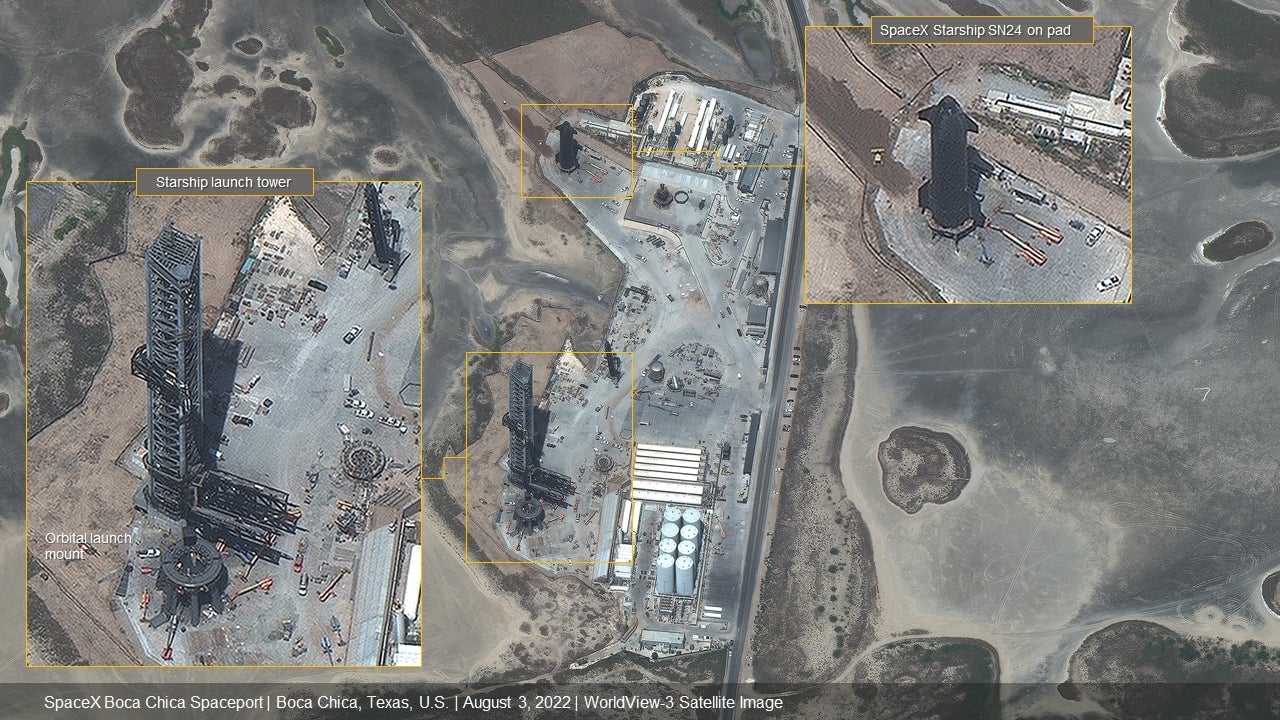Space Business: Yearbook
Space surprises in 2022 and 2023

Dear readers,
Suggested Reading
Welcome to Quartz’s newsletter on the economic possibilities of the extraterrestrial sphere. Please forward widely, and let me know what you think. This week: Year-end content, Vega failure, and Starlink hits 1 million users.
Related Content
Space Business will be on a holiday break for the next two weeks. Here’s to a happy, healthy and prosperous new year for all our readers!
🚀 🚀 🚀
Everything that happens in space can seem anticlimactic, since we’ve usually been waiting for several years (if we’re lucky) before that new rocket or satellite gets into orbit, and down to business.
That’s certainly true of the Artemis 1 Moon mission, my (perhaps obvious) pick for the biggest space story of 2022. After years of arguing over design choices, mismanagement, budget overruns, and test programs, the trip around the Moon went off almost without a hitch.
While we won’t see astronauts hopping on the newly proven Space Launch System rocket and Orion capsule again until 2024 at the earliest, the success of this year’s mission will serve as a tentpole for a great deal of Moon-focused activity, from robotic exploration in space to vehicle development back on Earth.
Exciting space news in recent years—reusable rockets, massive satellite constellations, new heavy-lift rockets—was mainly about infrastructure. These technologies are exciting for dorks (myself included), but the rest of the world wants to see what this infrastructure is used for. And that happened in a big way this year.
Russia’s decision to invade Ukraine, for example, has been a debacle, but it put an incredible spotlight everything changing in space. One of Russia’s first acts of war was hacking satellite communications networks, while SpaceX’s Starlink network became a vital tool for Ukrainian resistance. The public, along with intelligence agencies and militaries, relied on satellite data to understand and prosecute the fighting. Drones and missiles that rely on satellite navigation and communications have become central to the conflict.
It’s not the first “space war”—the 1990 Gulf War typically gets that distinction—but never before have space assets been so front and center.
In 1990, military space assets were government-owned and operated. This time around, private companies were responsible for spacecraft, leading to threats of attack from Russia. Several CEOs that couldn’t stop bragging about their companies’ work aiding Ukraine last spring turned down my requests to talk about Ukraine by the end of this year due to fears about their safety.
Things can sneak up on you: The architects of Starlink knew they would need customers around the world to make their network financially sustainable, but did not foresee that thousands of those customers would be soldiers in Eastern Europe. Satellite operators cherished the three-letter-agency clients that kept them in business, but didn’t anticipate what that would mean in the case of a nuclear power attempting to conquer a smaller neighbor.
Meanwhile, the builders of the Globalstar satellite network never could have predicted they would be providing emergency connectivity to thousands of iPhone owners. (Apple’s decision to quietly co-opt an entire public company to add satellite links to its most popular mobile products wouldn’t have surprised faithful Space Biz readers, though.) Just months after the rollout, the service has likely saved lives, including those of a couple whose car fell 300 ft down remote ravine.
What did sneak up on me: SpaceX’s launch cadence, which looks likely to produce 60 orbital launches in 2022. That’s an astonishing number—more than one launch per week—that no other rocket maker can match. You might consider that number juiced because so many flights were to launch SpaceX’s own Starlink satellites, but as a statement of capability, it stands alone. With the company beginning to launch its second generation of Starlink spacecraft, we can expect more value from orbit in the years ahead.
What might sneak up on us in 2023? You’ve told me that you’re salivating for (deep breath) a Starship test flight, NASA’s Psyche mission to the asteroid belt, Polaris Dawn’s potential EVA, the return of samples from the asteroid Bennu, and debut rocket flights for ULA’s Vulcan, Blue Origin’s New Glenn, and Arianespace’s Ariane 6. But here are a few under-the-radar nominees:
- China’s new space station will be complete, and western researchers have already started signing up to collaborate there. Will we see a non-Chinese astronaut visit?
- Boeing’s Starliner is poised to make its first crewed flight in April 2023. Expectations couldn’t be lower for the troubled vehicle, which is why, if it succeeds, we may be surprised by how a second American crewed spacecraft changes a market currently dominated by SpaceX’s Dragon.
- Robots are headed for the moon en masse: Attempted landings from companies including Japan’s iSpace, Intuitive Machines (two different missions!), Astrobotic, plus robots built by space agencies in Japan, India, and Russia. That’s at least seven moon landings on the agenda, and they’ll get tons of attention—and maybe send home some exciting new facts about the Moon.
All this activity in space, however, has readers fretting about space debris and traffic management. Given the attention to the problem, it’s unfair to say that this will sneak up on us, but the lack of urgency around addressing space safety might leave us with a nasty surprise. The leak in the Soyuz spacecraft at the ISS, likely caused by a micrometeroid impact, may be a warning for congested space lanes to come. It’s a champagne problem, in the sense that space junk worries us because of the growing value of space activity. But as I will ruefully attest on Jan. 1, champagne problems can still hurt.
Happy holidays, Space Business readers, and thank you for your continued patronage. The community around this newsletter has been one of my favorite things in 2022. Please keep sending me your tips, trivia, complaints and corrections, and consider sharing this newsletter with your friends and family—it’s the holiday gift that keeps arriving all year long.
🌕🌖🌗
IMAGERY INTERLUDE
It’s interesting to see undervalued space assets being snapped up (another trend to watch in 2023). Maxar, the satellite imagery company, is being purchased in a $6.4 billion private equity deal, more than double its recent stock price. Here are two of my favorite shots from its collection of top images in 2022—one of SpaceX’s Starship facility at Boca Chica, and the other of Mecca in Saudi Arabia.


🛰 🛰 🛰
SPACE DEBRIS
Vega fails. The second flight of a small rocket operated by Arianespace failed on Dec. 20, destroying the two satellites onboard and raising more questions about Europe’s difficulty developing its own reliable launch vehicles.
Soyuz leaks. There’s trouble at the International Space Station, where a Russian Soyuz spacecraft sprung a serious coolant leak caused by what appears to be a micrometeroid strike. The spacecraft is currently serving as an emergency life raft ahead of a planned March departure with two Russians and one American on board. Engineers are still assessing whether the Soyuz will need to be replaced.
Rocket Lab postpones first US launch. The US-New Zealand space firm delayed the first mission from its launch site in Virginia due to high winds in the upper atmosphere, but expects to fly a package of satellites for operator HawkEye 360 in early 2023.
Aerojet finds a buyer. L3Harrris, the defense conglomerate, announced a $4.7 billion deal for Aerojet Rocketdyne, the troubled maker of rocket motors for missiles and space vehicles. Aerojet had one acquisition attempt squashed by regulators earlier this year, but legal observers expect the current deal to go through.
Starlink hits a million. Subscribers, that is, suggesting that the company is taking in around $1 billion in annual revenue. This week, Ukrainian officials said they had ordered 10,000 new terminals to boost both their military operations and their economy.
Good night, Insight. A sad tweet from a dying robot signaled the end of NASA’s Mars Insight mission, which spent four years on the surface of the Red Planet. It detected more than a thousand earthquakes with its seismometer, helping scientists understand Martian geology.
Your pal,
Tim
This was issue 163 of our newsletter. Hope your week is out of this world! Please send your sneaky 2023 predictions, undervalued space companies, tips, and informed opinions to [email protected].